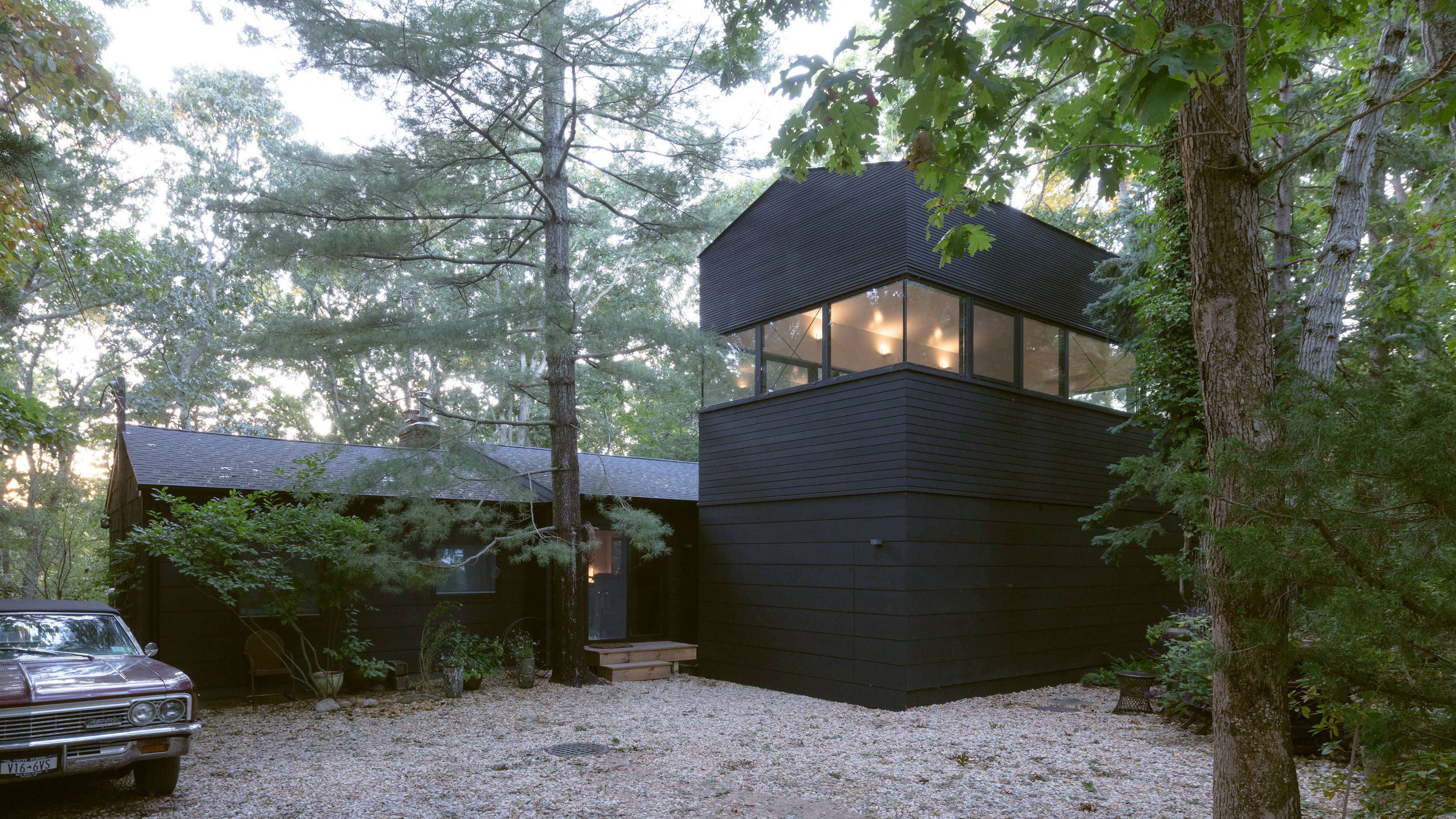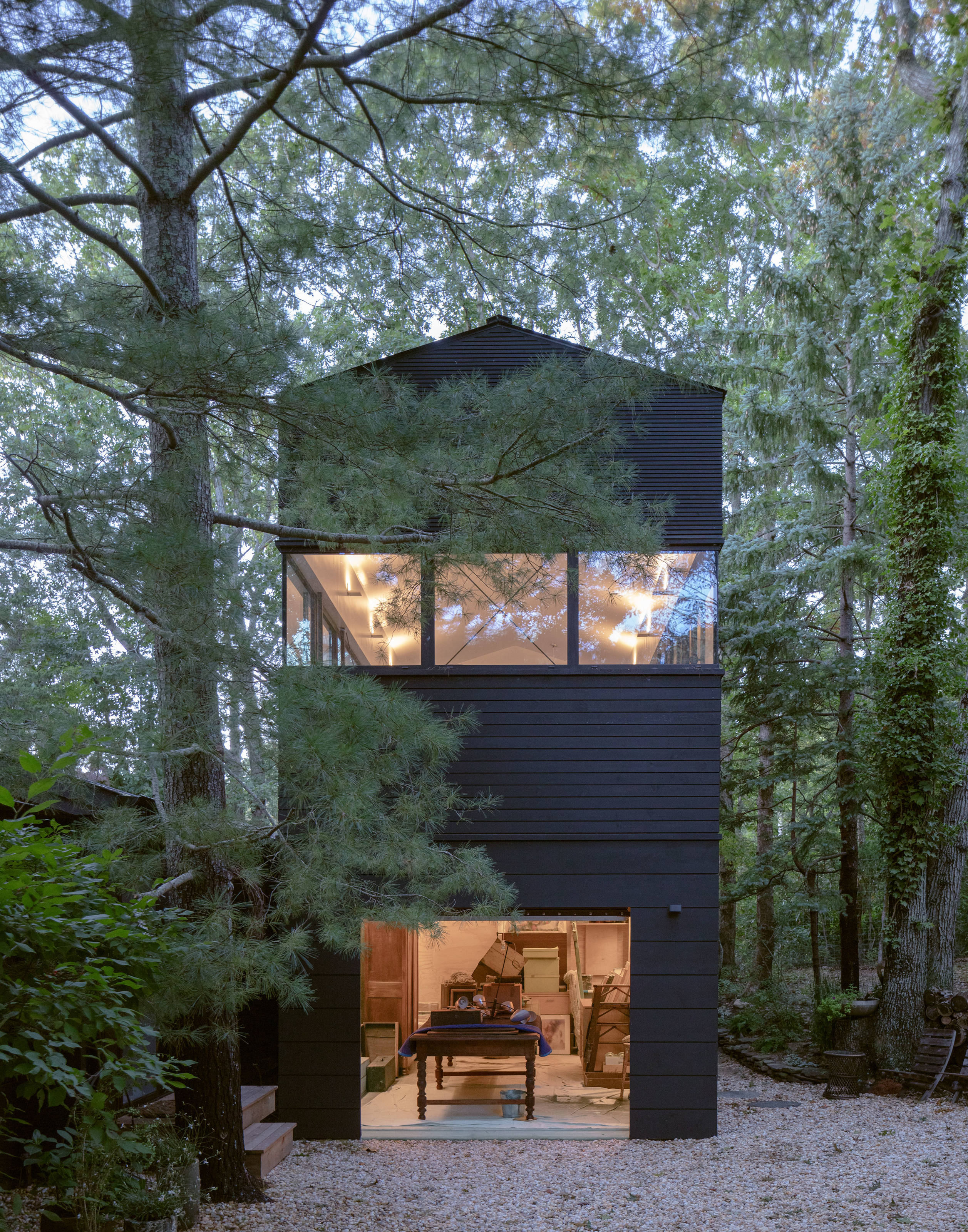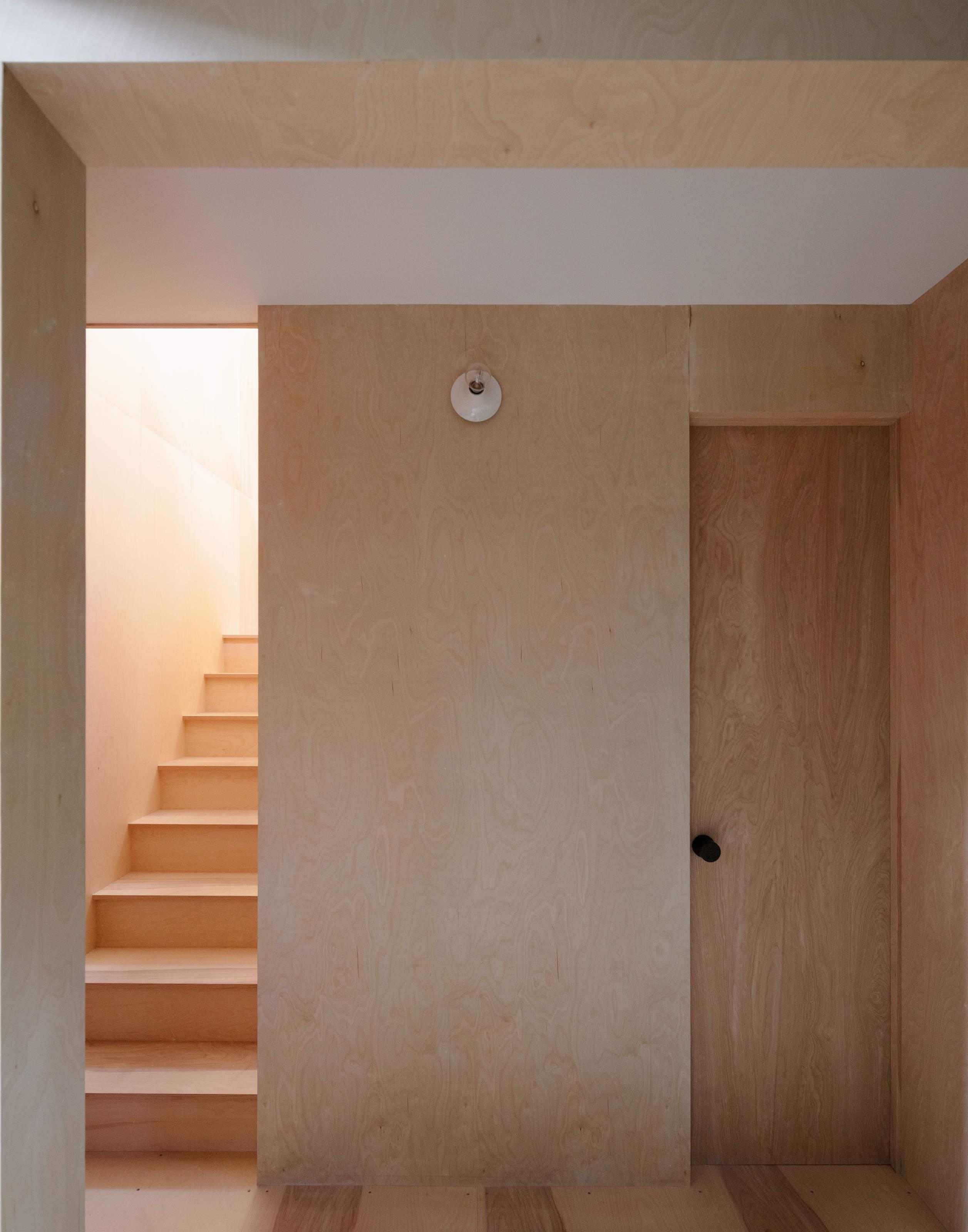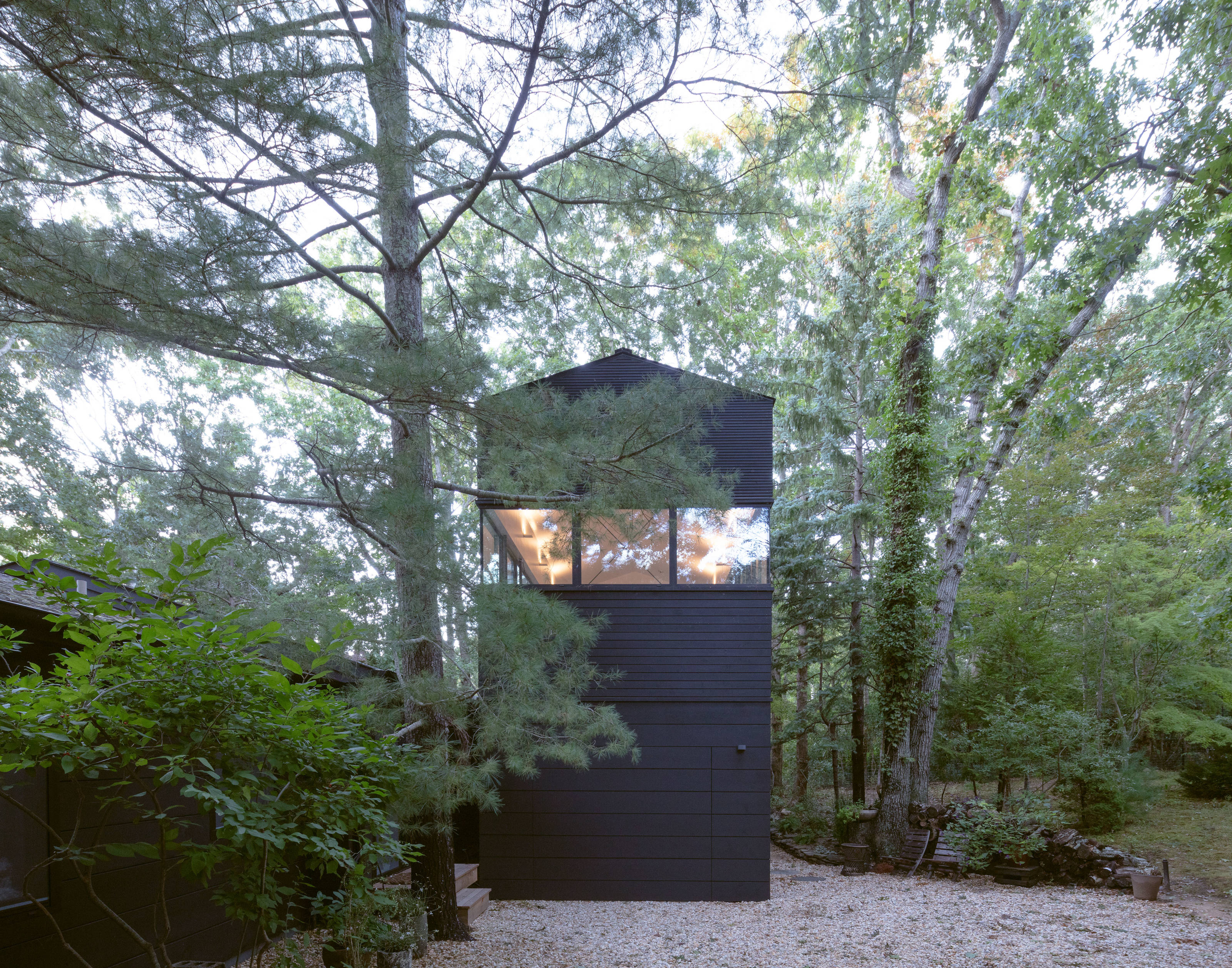This artist’s studio on Long Island is carefully placed amidst a wooded site
Architects Worrell Yeung designed the Springs artist's studio to blend into the trees, with leafy views from the lofty atelier

Worrell Yeung has designed an artist's studio within a two-story addition to an existing home on Long Island. The small hamlet of Springs, located just to the north of East Hampton, has a long history of artistic residencies. The Pollock-Krasner House is one of the local attractions and there are still plenty of artists’ houses dotted around the many wooded lots.

A Long Island artist's studio dedicated to creativity
This project was commissioned by an artist, creative director and florist who wanted somewhere to display their collection of art and ephemera as well as create. ‘Jackson Pollock, Willem de Kooning, Helen Frankenthaler, and Jane Freilicher all painted out here,’ says Max Worrell, co-founder and principal of Brooklyn-based Worrell Yeung, ‘We were drawn to that lineage.’

Despite the generous, privately situated residential lots, the neighbourhood has strict zoning laws about the scope of new building. Worrell, together with Jejon Yeung and Yunchao Le, designed an 800 square foot addition to the existing single storey house with the smallest possible footprint, rising up into the canopy.

Linked to the house by a glazed canopy, the ground floor of the new structure contains a garage that can double up as an exhibition space. Above it is a high-ceilinged studio, lit by a ring of glazing overlooking the tree canopy.

The project was achieved without removing any trees, so the new structure appears to have been present for decades as the forest grew around it. The black clad exterior serves to further conceal it against the rich green forest.

The architects have rendered this wooden cladding in three distinct sizes, from a solid plinth-like base through to the slender battens of the pitched roof. The original house was also reframed and stained black to match.

Inside, there is extensive use of plywood, used for cladding and for the new staircase leading up to the studio. The windows are steel framed, with carefully engineered glazed corners that give the impression the roof structure floats above the house – particularly effective at night when the studio is illuminated. The studio floor and lower walls are also clad in plywood, along with the bespoke cabinetry that houses the sink unit and storage area.
Receive our daily digest of inspiration, escapism and design stories from around the world direct to your inbox.

‘We wanted to create this experience of being perched in the trees; a retreat for working, says Yeung, ‘The studio is private, protected from direct sunlight, and deeply connected to the surrounding nature and landscape.’

Jonathan Bell has written for Wallpaper* magazine since 1999, covering everything from architecture and transport design to books, tech and graphic design. He is now the magazine’s Transport and Technology Editor. Jonathan has written and edited 15 books, including Concept Car Design, 21st Century House, and The New Modern House. He is also the host of Wallpaper’s first podcast.
-
 A compact Scottish home is a 'sunny place,' nestled into its thriving orchard setting
A compact Scottish home is a 'sunny place,' nestled into its thriving orchard settingGrianan (Gaelic for 'sunny place') is a single-storey Scottish home by Cameron Webster Architects set in rural Stirlingshire
-
 7 colours that will define 2026, from rich gold to glacier blue
7 colours that will define 2026, from rich gold to glacier blueThese moody hues, versatile neutrals and vivid shades will shape the new year, according to trend forecasters
-
 In Norway, discover 1000 years of Queer expression in Islamic Art
In Norway, discover 1000 years of Queer expression in Islamic Art'Deviant Ornaments' at the National Museum of Norway examines the far-reaching history of Queer art
-
 Step inside this resilient, river-facing cabin for a life with ‘less stuff’
Step inside this resilient, river-facing cabin for a life with ‘less stuff’A tough little cabin designed by architects Wittman Estes, with a big view of the Pacific Northwest's Wenatchee River, is the perfect cosy retreat
-
 Remembering Robert A.M. Stern, an architect who discovered possibility in the past
Remembering Robert A.M. Stern, an architect who discovered possibility in the pastIt's easy to dismiss the late architect as a traditionalist. But Stern was, in fact, a design rebel whose buildings were as distinctly grand and buttoned-up as his chalk-striped suits
-
 Own an early John Lautner, perched in LA’s Echo Park hills
Own an early John Lautner, perched in LA’s Echo Park hillsThe restored and updated Jules Salkin Residence by John Lautner is a unique piece of Californian design heritage, an early private house by the Frank Lloyd Wright acolyte that points to his future iconic status
-
 The Stahl House – an icon of mid-century modernism – is for sale in Los Angeles
The Stahl House – an icon of mid-century modernism – is for sale in Los AngelesAfter 65 years in the hands of the same family, the home, also known as Case Study House #22, has been listed for $25 million
-
 Houston's Ismaili Centre is the most dazzling new building in America. Here's a look inside
Houston's Ismaili Centre is the most dazzling new building in America. Here's a look insideLondon-based architect Farshid Moussavi designed a new building open to all – and in the process, has created a gleaming new monument
-
 Frank Lloyd Wright’s Fountainhead will be opened to the public for the first time
Frank Lloyd Wright’s Fountainhead will be opened to the public for the first timeThe home, a defining example of the architect’s vision for American design, has been acquired by the Mississippi Museum of Art, which will open it to the public, giving visitors the chance to experience Frank Lloyd Wright’s genius firsthand
-
 Clad in terracotta, these new Williamsburg homes blend loft living and an organic feel
Clad in terracotta, these new Williamsburg homes blend loft living and an organic feelThe Williamsburg homes inside 103 Grand Street, designed by Brooklyn-based architects Of Possible, bring together elegant interiors and dramatic outdoor space in a slick, stacked volume
-
 This ethereal Miami residence sprouted out of a wild, jungle-like garden
This ethereal Miami residence sprouted out of a wild, jungle-like gardenA Miami couple tapped local firm Brillhart Architecture to design them a house that merged Florida vernacular, Paul Rudolph and 'too many plants to count’